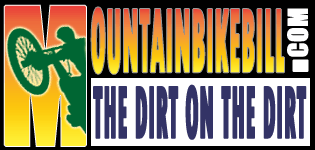Thanksgiving has brought me to Las Vegas. Besides overeating with family getting out to the Cowboy Trails in the Red Rock area just west of town was on the list. A series of winter storms was rolling through the area so the weather was a bit iffy.

Well Las Vegas is a gambling town so I opted to roll the weather dice and hit the trails. I have ridden here before and near the trails handle rain very well. When I arrived at the trail head it was quite brisk at 47 degrees and wind gusts up to 20mph. I have gear so it was go time.

I was interested in doing some of the trails I had not done before. Last time out I climbed up a technical bit of desert goodness that is now been named Kibbles and Bits. I don’t recall that trail being named last time. This outing I went “Bunny”. A couple of years ago while working in the Pacific Northwest, I asked a local bike shop guy if bad weather was expected and his response has really stuck with me. “There is no bad weather, only bad gear.”

My gear included a long sleeve jersey base layer, a short sleeve jersey on top of that followed up with a cycling specific windbreaker/jacket. I had bandanna tied low around my ears. While I was a bit cold starting out, this was a good combo after a short distance up the trail. I had on a set of knee warmers and some wool socks. This was pretty good at the start, but I could have easily gone with full length leg warmers. I love my wool socks as it is pretty much the only type of socks I wear year round. On this particular day, the wind was cutting though those socks a bit more than I cared for but it was manageable.



When I got to the junction of Fossil Canyon I took First Finger as I was pretty sure I had not been on it before. First Finger was not sheltered from the wind much and I while I was fairly comfortable for the most part my toes were pretty cold as the wind just cut right through my shoes and socks. The temperature was dropping as well.

After First Finger, I got onto the SARS trail. I had been on this trail before and my intention was to get up to the Ridge Trail and then take Bomb Voyage or Bob Gnarly down.

A very short segment of of descending into shallow canyon SARS turns back into a climb. The snow started to come down pretty solid at this point. This was not bad at all as I was sheltered from the wind while in this canyon. My toes were damn cold at this point. As I neared the top of SARS the wind got to be really biting and my toes were really unhappy at this point. I pulled the plug on heading up to the ridge and decided to take Boneshaker down.

I have done Boneshaker before and it certainly earns its name. Now that I had committed to bailing out there was a knew level of calmness in my head since I was no longer having to make those risk vs reward calculations. This was a good thing as you need your wits about you when working your way down this trail. The snow was pretty close to horizontal now and the windward side of my face was almost numb. It was pretty cool to see this place in this state. I had a surreal moment while going through a series of technical rock moves on Boneshaker when my speed and direction became perfectly in sync with the near sideways falling snow. For a second or so it looked like the snow and I were motionless while the trail moved underneath us. It was so cool!
Boneshaker dumps off around about 1,000 feet in a mile and it certainly felt warmer as I rolled into the trail head. The thermometer in my truck read 37 degrees. Some would say the house won this gamble, but upon further reflection now that I can feel my toes and the windward side of my face, I rolled off that ridge line with some great memories.
The sun is supposed to be out tomorrow!
























